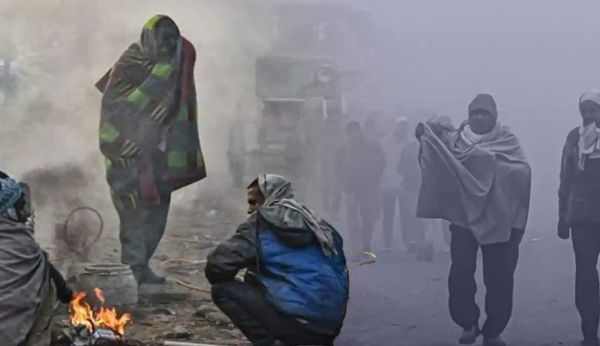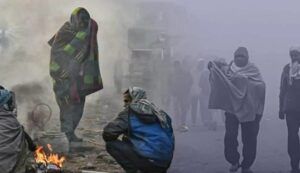
New Delhi: On Saturday morning, a chilly wave swept over Delhi, shrouding the city in thick fog. Many homeless persons were seen sleeping at night shelters as the hard winter persisted.

The India Meteorological Department reports that at 5:30 am on Saturday, the temperature in Delhi was 10.2 degrees Celsius. It was 9.6 degrees Celsius in the city at this time yesterday.
In the meanwhile, the national capital’s air quality remained in the “very poor” range. The Central Pollution Control Board reports that around 6 a.m. today, the AQI in Delhi was 385. It was 348 yesterday at the same time.
A score of zero to fifty is regarded as “good,” 51 to 100 as “satisfactory,” 101 to 200 as “moderate,” 201 to 300 as “poor,” 301 to 400 as “very poor,” and 401 to 500 as “severe.”
A night shelter on Lodhi Road was seen with every bed full as the temperature dropped.
Additionally, 235 pagoda tents have been erected by the Delhi Urban Shelter Improvement Board (DUSIB) to house the homeless. AIIMS, Lodhi Road, and the Nizamuddin flyover are among the locations in the national capital where night shelters have been erected.
Residents of the capital were spotted congregating around bonfires in reaction to the cold weather, and as the temperature continued to drop, some sought refuge in night houses.
Similar conditions, including thick fog layers and chilly waves, were seen on Saturday morning in other North Indian states.
At 5:30 a.m. on Saturday, the temperature in Lucknow, the capital of Uttar Pradesh, was 11.4 degrees Celsius. A thick layer of fog was seen covering the state’s Mainpuri metropolis.
Shimla, the capital of Himachal Pradesh, had an uncommon meteorological event Thursday when it achieved its highest-ever January daytime temperature of 21.6°C. This was the second-highest January temperature in the region’s history, surpassing the previous record of 21.4°C set on January 30, 2006, according to the India Meteorological Department (IMD).
“If we look at the past few days, Shimla has seen clear skies, which has led to a significant rise in both minimum and maximum temperatures,” said Dr. Kuldeep Srivastava, Head of IMD Himachal Pradesh.
But on the evening of January 4, a new Western Disturbance is expected to move into the area, bringing with it a lot of snow and rain from January 5 to January 7. “Oh,” he said.
The IMD predicts that Lahaul and Spiti, Kinnaur, will get mild to moderate rain and snowfall. On January 6, precipitation and snowfall are anticipated in the middle Himalayan area. On January 6, the plains that border Punjab and Haryana might get rain and thunderstorms.
At 5:30 a.m. on Saturday, the capital of Jammu and Kashmir reached -0.6 degrees Celsius.